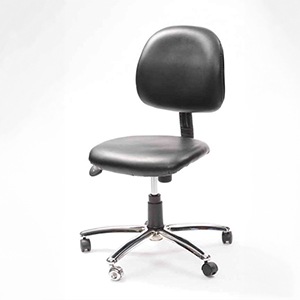Electronics Testing Services

Industry
Electronics
Challenge
In the electronics industry, the risk of electrostatic discharge (ESD) can be a major concern, especially when it comes to testing and quality control. As such, many companies choose to invest in specialized ESD chairs to minimize the risk of ESD damage to sensitive equipment. In this case study, we'll explore how a customer who is into electronics testing was able to convert their normal chairs to ESD chairs and the benefits they gained from doing so.
The customer in question was a testing laboratory that specialized in electronics testing. They were using standard chairs in their laboratory, which posed a risk of ESD damage to the sensitive testing equipment. The customer recognized the importance of ESD control and wanted to upgrade their equipment to minimize the risk of ESD damage.
Solution
Initially, the customer considered purchasing new ESD chairs, but found that the cost was prohibitive. Instead, they looked for an alternative solution and found that it was possible to convert their existing chairs to ESD chairs by using special conductive materials. This would allow them to achieve the same level of protection without the expense of purchasing new chairs.
The customer worked with a specialist ESD supplier to source the necessary materials and retrofit their existing chairs. The supplier provided a range of conductive materials, including conductive vinyl and ESD-safe foam. The customer's staff was trained on how to fit the materials to the chairs, and the supplier provided ongoing support and advice as needed.
The conversion of the chairs to ESD chairs had a significant impact on the customer's business. The chairs provided a level of ESD protection that was previously lacking, minimizing the risk of ESD damage to sensitive testing equipment. This, in turn, improved the accuracy and reliability of test results and helped to reduce the frequency of retesting and associated costs.
Moreover, the customer found that the conversion of the chairs was a cost-effective solution compared to purchasing new ESD chairs. This saved the customer a considerable amount of money and enabled them to invest in other areas of their business.
Merits
In conclusion, the conversion of normal chairs to ESD chairs is a viable solution for organizations that are looking to implement ESD control measures but are working with a tight budget. By working with an ESD supplier, the customer in this case study was able to retrofit their existing chairs with conductive materials and achieve the same level of protection as new ESD chairs. The result was improved accuracy and reliability of test results and a significant cost savings for the customer.
